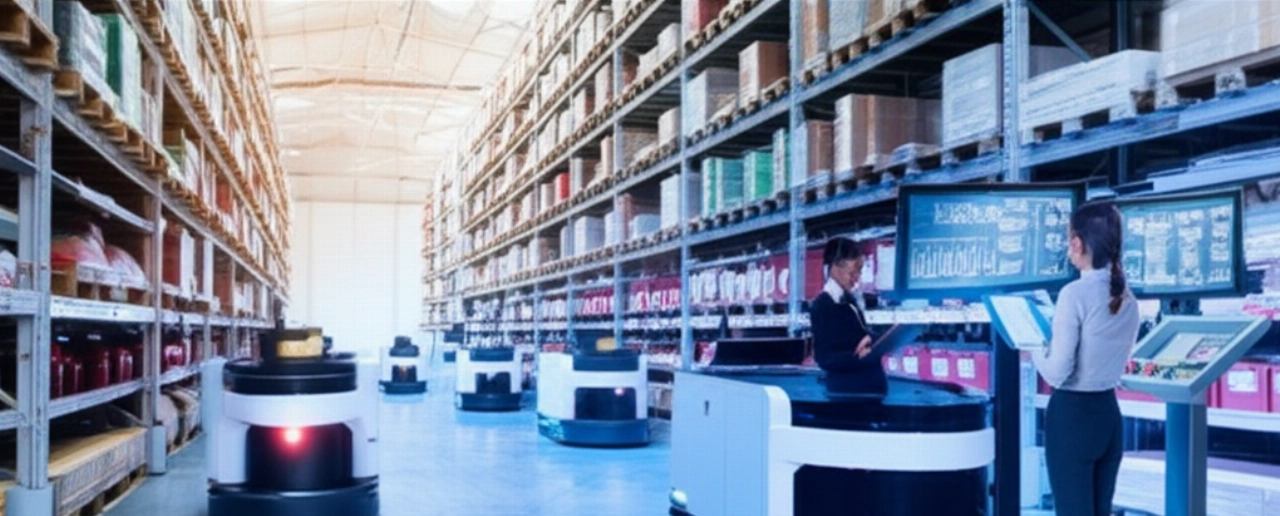Is your current e-commerce platform, perhaps a basic Shopify plan, starting to feel less like a launchpad and more like a ceiling? For ambitious B2B and enterprise businesses, the dread of outgrowing a system is a palpable fear. You’re not just selling products; you’re managing complex pricing, intricate workflows, and a labyrinth of integrations. When your platform can’t keep pace, it’s not merely an inconvenience—it’s a direct threat to your market share and future profitability.
Many enterprises reach a critical juncture where the promise of simplicity from platforms like Shopify gives way to the harsh reality of their limitations. This isn't about finding just any Shopify alternative; it's about identifying a strategic partner and a robust solution that can truly unlock unrestricted growth, integrate seamlessly with your entire enterprise, and provide the competitive advantage you desperately need. This guide is your roadmap to navigating that complex decision, transforming potential pitfalls into powerful opportunities.

The 'One-Size-Fits-All' Trap: Why Standard SaaS Platforms Strangle Enterprise Growth
The initial appeal of a 'plug-and-play' e-commerce solution is undeniable. It's fast, seemingly simple, and gets you online quickly. But for B2B and enterprise operations, this simplicity often masks a profound problem: the "one-size-fits-all" trap. Your business isn't generic; it has unique pricing tiers, custom product configurations, complex approval workflows, and specific customer segmentation needs that a standard SaaS platform simply cannot accommodate without extensive, often clunky, workarounds.
- The Scalability Ceiling: As your traffic surges and your product catalog expands, a basic platform buckles. Performance degrades, site speed plummets, and your conversion rates suffer. You hit a hard limit, unable to scale without a complete replatforming.
- Integration Hell: Disconnected systems are an operational nightmare. Your ERP, PIM, CRM, and WMS need to speak to your e-commerce platform fluently. When they don't, you're left with manual data entry, errors, and a fragmented view of your customer and inventory—a true integration hell.
- Lack of Customization: Need a unique B2B portal? A complex quote-to-order process? Or dynamic pricing based on customer history and volume? Standard platforms force you into rigid templates, stifling innovation and preventing you from delivering the bespoke digital experience your enterprise customers demand.
These limitations aren't just technical; they translate directly into lost revenue, increased operational costs, and a significant competitive disadvantage. True enterprise growth demands a platform engineered for complexity, not constrained by simplicity.

Beyond Shopify: Key Criteria for Evaluating Enterprise Shopify Alternatives
Moving beyond a basic platform requires a strategic shift in perspective. You're not just buying software; you're investing in a foundational component of your digital business. When evaluating Shopify alternatives, especially for B2B and enterprise, focus on these critical pillars:
- Unrivaled Scalability & Performance: Can the platform handle millions of SKUs, thousands of concurrent users, and massive transaction volumes without breaking a sweat? Look for robust architecture designed for high performance, even during peak periods. This is crucial for maintaining a high conversion rate optimization (CRO).
- Deep Integration Capabilities: The platform must be an open ecosystem, not a walled garden. Prioritize solutions with powerful APIs that facilitate seamless integration with your existing ERP, PIM, CRM, and WMS. This is the bedrock of operational efficiency and accurate data flow. Consider solutions built on API-first principles.
- Customization & Flexibility: Does it support complex B2B pricing models, custom workflows (e.g., multi-level approvals), product configurators, and personalized customer experiences? Look for platforms that offer the flexibility to build unique features tailored to your specific business logic, without compromising core stability. This often points towards headless commerce or composable commerce architectures.
- Total Cost of Ownership (TCO) & ROI: Beyond initial licensing, consider implementation costs, ongoing maintenance, support, and future upgrade paths. A seemingly cheaper solution might incur significant hidden costs in customization, integration, and performance bottlenecks. Focus on the long-term ROI derived from increased efficiency, higher conversions, and reduced manual effort.
- Security & Compliance: For enterprise-level data, robust security protocols and compliance with industry regulations (e.g., GDPR, PCI DSS) are non-negotiable.
Choosing wisely here is the difference between a platform that empowers your growth and one that becomes another source of technical debt.

The Multi-Million Dollar Migration: From Constraint to Competitive Edge
The fear of a failed migration is real. Lost SEO rankings, data corruption, catastrophic downtime—these are the nightmares that keep CTOs awake. Yet, a platform migration, when executed strategically, is not a risk to be managed; it's an unparalleled opportunity to unlock performance, scalability, and competitive advantage. We've seen this transformation firsthand.
Consider a recent engagement with a global B2B manufacturer, generating over €75 million annually, whose legacy platform was crumbling under the weight of their expanding product catalog and international reach. Their integration with their SAP ERP was a manual, error-prone nightmare, and their site performance was abysmal, especially during peak order periods. The challenge was immense: migrate millions of SKUs, complex customer data, and integrate seamlessly with their global SAP instance, all while ensuring zero downtime and preserving critical SEO rankings.
Our approach wasn't just technical; it was strategic. We engineered a phased migration to a robust, enterprise-grade platform, leveraging a MACH architecture philosophy. We meticulously mapped data, built custom integration layers, and implemented a comprehensive SEO migration strategy. The result? A seamless transition with absolutely zero downtime, a 50% improvement in site performance, and a fully automated, real-time integration with their ERP, eliminating manual data entry entirely. This wasn't just a replatforming; it was a strategic overhaul that positioned them for unprecedented growth, turning a potential disaster into a significant competitive moat.
Commerce-K: Your Partner in Building a Future-Proof Digital Ecosystem
At Commerce-K, we understand that selecting the right Shopify alternative is not a transactional decision; it's a strategic imperative. We don't just implement platforms; we engineer bespoke digital commerce ecosystems designed to eliminate your growth ceilings and integrate seamlessly with your entire enterprise. Our philosophy is rooted in partnership, not just vendor-client relationships.
We bridge the gap between your ambitious business objectives and the complex technical realities. Our expertise spans the full spectrum of enterprise e-commerce, from intricate B2B workflows and complex integrations to high-performance architectures and future-proof composable solutions. We act as your strategic advisors, guiding you through the labyrinth of options, de-risking your investment, and ensuring your digital commerce platform becomes a powerful engine for profitability and market leadership.
We believe that your commerce platform should be an asset that evolves with your business, not against it. It should be a source of competitive advantage, not technical debt. This is the Commerce-K difference.
Frequently Asked Questions about Shopify Alternatives
What is the typical ROI for investing in a more complex enterprise e-commerce platform compared to a basic SaaS solution?
While initial investment can be higher, the ROI for enterprise platforms is typically realized through significant operational efficiencies (reduced manual work, automated integrations), increased conversion rates due to superior performance and user experience, enhanced customer lifetime value through personalization, and the ability to scale without costly replatforming. We focus on measurable business outcomes, not just technical implementations.
How do you ensure data integrity and SEO continuity during a complex platform migration?
Data integrity is paramount. We employ rigorous data mapping, cleansing, and validation processes, often utilizing automated tools alongside manual checks. For SEO, our comprehensive migration strategy includes detailed redirect mapping, content audits, URL structure preservation, and post-launch monitoring to ensure minimal impact on search rankings and organic traffic. Our goal is not just to maintain, but to enhance your SEO performance.
What are the ongoing maintenance and Total Cost of Ownership (TCO) considerations for these advanced platforms?
TCO includes licensing, hosting, maintenance, support, and future development. While enterprise platforms require more specialized expertise, our focus on robust, scalable architectures and efficient development practices aims to optimize TCO. We provide clear projections and ongoing support models to ensure predictable costs and maximum value, helping you avoid hidden expenses and technical debt.
Is a full replatforming always necessary, or are there incremental approaches to upgrading our commerce capabilities?
Not always. While a full replatforming might be necessary for severely outdated systems, we often explore incremental approaches like adopting a headless architecture or integrating specific microservices (e.g., for PIM or advanced search) to enhance existing platforms. Our initial Scoping & Strategy Session helps determine the most effective and least disruptive path for your specific needs.
Ready to Transform Your Digital Commerce?
Stop navigating technical debt and the limitations of a "one-size-fits-all" approach. Your business deserves a clear digital commerce roadmap that delivers measurable results and positions you for unrestricted growth. The first step isn't a quote; it's a no-obligation Scoping & Strategy Session with our senior architects.
We'll help you map your potential, de-risk your investment, and identify the strategic opportunities you're currently missing. Discover how a truly enterprise-grade Shopify alternative can become your most powerful competitive asset. Click here, tell us about your project, and start building your future-proof commerce engine today.
Now that you understand the strategic importance of choosing the right platform, discover how we execute a seamless ecommerce migration service or explore the benefits of custom ecommerce development for your unique business needs.





